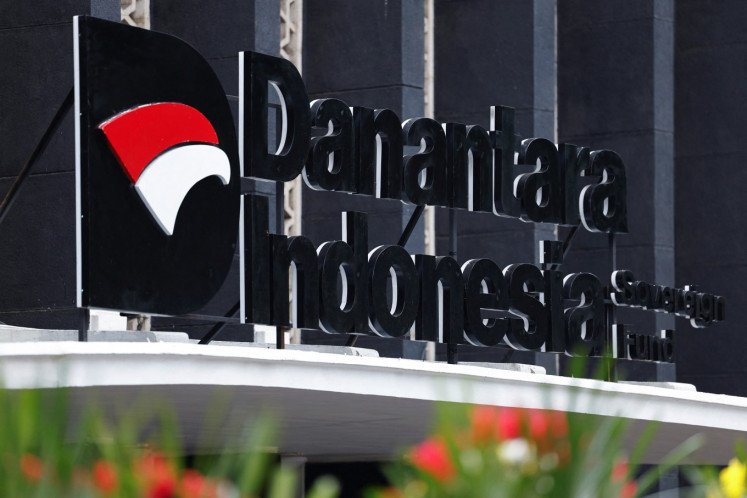Popular Reads
Top Results
Can't find what you're looking for?
View all search resultsPopular Reads
Top Results
Can't find what you're looking for?
View all search resultsOur new sea gateway
Change text size
Gift Premium Articles
to Anyone
T
he opening of the New Priok Container Terminal (NPCT) 1 in Kalibaru, North Jakarta on Tuesday with an annual capacity of 1.5 million twenty-foot-equivalent units (TEUs) will significantly improve goods flowing through Indonesia’s largest trading hub. This new terminal is only the first of five phases of Tanjung Priok port’s overall expansion, which will increase its handling capacity by 11.5 million TEUs to a total of 19.5 million in 2020.
Efficient sea transportation services are indeed a prerequisite to developing efficient supply chains within the vast archipelago. Another vital component of this service is efficient seaports because smooth sea transportation will contribute to strengthening the overall competitiveness of the economy.
Superb seaport performance will unleash the country’s vast economic potential because shipping lines and the whole business sector will benefit from improved logistics and the reduced costs of supply chains. Indonesia’s logistics costs have been 2.15 times higher than in other ASEAN countries and the biggest component of these costs is grossly inefficient seaport handling.
A recent survey by the World Bank concluded that 40 percent of Indonesia’s unusually high logistics costs were caused by inefficient transportation and cargo handling. Further down the line, the inefficient logistics system made the inventory costs of manufacturing firms in Indonesia much higher, as companies simply do not know when their inputs or parts will arrive because of uncertainty in port handling, paperwork and road transportation.
Reducing congestion problems at Tanjung Priok port will strengthen the competitiveness of Southeast Asia’s largest economy because this port handles not only a large portion of the country’s exports but also almost 70 percent of its imports. A smoother flow of imports will in turn help reduce production costs because manufacturing plants operating in Jakarta and West Java depend largely on imported basic and intermediate materials.
As the new terminal is equipped with eight cranes that can move 30 containers per hour and can dock freighters with a draft of up to 16 meters, the new facility will also encourage shipping lines to operate bigger container vessels with capacities of up to 10,000 TEUs directly from Europe and East Asia to Jakarta, instead of using transshipment services via Singapore’s port.
It’s encouraging to note that the Kalibaru terminal also will be integrated with online port system Inaportnet, which will expedite clearances and permits to move cargoes online, thereby cutting costs. This online service is a breakthrough because seaport operations involve about 18 government institutions.
Without an efficient freight logistics system, low connectivity within the country will continue to undermine efforts by the provinces to diversify their economies as resource-producing regions in the outer islands cannot efficiently link up with markets and manufacturing hubs in Java and Sumatra. Whereas most raw commodities need to be brought from the outer islands to be processed in Java and industrial products have to be transported from Java to the outer islands.










